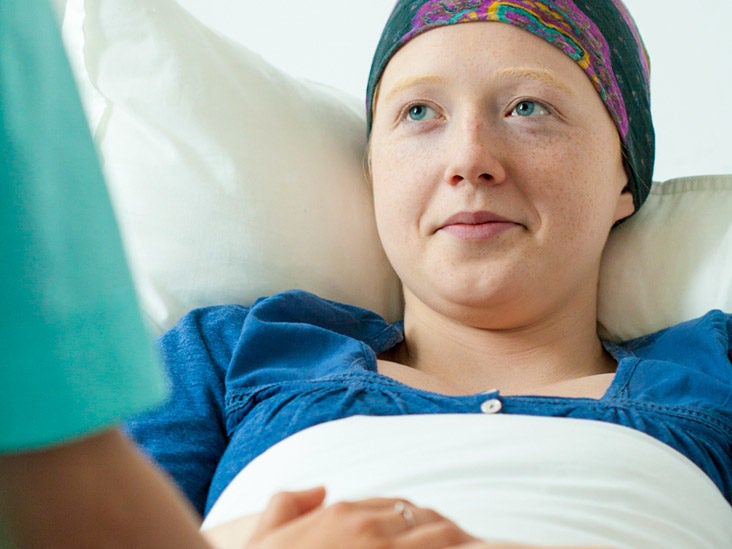Guidelines for Breast Cancer Screening – The American Cancer Society recommends that women who are not pregnant or who have had a hysterectomy (have had their uterus removed) and who have not had a mastectomy (removed breast tissue) undergo mammography every two years. This includes women between the ages of 40 and 44. Women who have had a mastectomy should continue to undergo regular screening.
Women diagnosed with breast cancer should follow their physician’s instructions regarding their treatment.
It’s easy to assume that everyone who has breast cancer is sick and dying. But this isn’t always true. Many people develop breast cancer later in life and can have successful treatment.
Some people never get breast cancer. Some women have been screened for years and have never had a problem.
As a result, it can be hard to know if you should have regular mammograms. But some guidelines can help you decide.
For example, the U.S. Preventive Services Task Force (USPSTF) recommends that women ages 50 to 74 receive a mammogram every two years.
When it comes to breast cancer screening, there is a lot of information out there. Some doctors recommend mammograms every year, doctors recommend self-exams, and doctors recommend mammograms every two years.
Most women don’t have enough knowledge about breast health. This causes them not to seek breast cancer screenings. This leads to them getting breast cancer when it is already too late.
But, there are still a lot of women who don’t get screened. So, this leaves them open to the risk of getting breast cancer.
This blog will cover different aspects of breast health, including how to start screening, how often to screen, what to look for during a self-exam, and what to look for when getting a mammogram.

Early detection
The United States Preventive Services Task Force (USPSTF) is the government agency that recommends preventive services, such as screening tests, are recommended for the general public. The USPSTF recently released updated recommendations about breast cancer screening. These new recommendations focus on mammography, clinical breast exams, and breast MRI.
These updated recommendations include three new statements about mammography, two recent opinions about clinical breast exams, and five new statements about breast MRI.
The USPSTF recommends against routine mammography for women aged 40 to 49 without additional risk factors. This means that these women should not be screened with mammography every year.
The USPSTF recommends against annual mammography for women aged 50 to 74 with one or more additional risk factors. This means that women in this age group should not be screened yearly with mammography.
The USPSTF recommends that women aged 75 and older without additional risk factors have annual screening with mammography. This means that mammography should screen women in this age group yearly.
Procedure choice
If you have a family history of breast cancer or are over 50 years old, consider having a mammogram yearly. While many women have a mammogram each year, many others do not.
The good news is that you can start saving money for your mammogram right now.
If you’re like me, you know you should be having regular health screenings. However, you might be wondering how to do that when you live in another country.
You can save $25 per visit by enrolling in a health savings account in the United States. Health Savings Accounts (HSAs) are similar to traditional pre-tax accounts.
You can deposit money in your HSA and use it to pay for medical expenses. You can only use funds in your HSA for healthcare expenses.
If you’re ready to start saving money for your next health screening, I recommend enrolling in an HSA.
As we age, our risk of developing cancer increases. If you are between 30 and 40, talk to your doctor about how often you should get screened. If you’re over 40 years old and have never been screened, I recommend getting mammograms once every two years and annual breast exams.

Breast self-examination
The American Cancer Society (ACS) recommends that women get mammograms yearly starting at age 50. Women between ages 40 and 49 may also be candidates for screening mammograms.
Women who have had a biopsy or lumpectomy in the past two years and are not currently at high risk of developing breast cancer should have a screening mammogram every other year.
However, some women may have a mammogram once a year instead of every two years. Talk to your doctor to see if this makes sense for you.
If you’ve been told you have breast cancer, you may wonder how often you should go for screening.
Breast cancer screening isn’t just a test that tells you whether or not you have breast cancer. It can also tell you how far along you are with the disease and how fast it’s growing.
The American College of Radiology recommends annual mammograms for women age 40.
Breast exams aren’t the only way to detect breast cancer. Doctors now have many other tests that can help identify tumors early.
So if you’re worried about breast cancer, talk to your doctor. They can help you determine which tests you need and when to start.
Breast cancer risk factors
If you suspect a lump or a change in your breast size, you should immediately visit your doctor. Your doctor can help you determine if the changes are benign or not.
The good news is that there are many options for women who want to reduce their risk of breast cancer. Mammograms are the most common screening tool, but there are other types of tests you can get as well.
Some are more sensitive than others, and each has pros and cons. In addition, there are non-invasive tests you can get that may not tell you if you have cancer but will give you information about your risk.
As for me, I plan to get a mammogram and a genetic test every year. I will make sure I know what I’m getting into before I start.
The American Cancer Society provided the information contained in this post. It has been reviewed by the medical and scientific communities, including those at the National Institutes of Health, the Centers for Disease Control and Prevention, the Department of Defense, and the Food and Drug Administration.

Frequently Asked Questions (FAQs)
Q: How should women learn more about breast cancer screening?
A: Women should know the risks associated with different types of screenings. Also, women need to talk to their doctors about which screening test makes the most sense.
Q: What are the risks associated with mammograms?
A: Mammograms can help women detect abnormal breast tissue or cysts before they become large and cause health problems. A mammogram can result in a false positive, meaning that the test shows something as odd when it is not. However, mammograms also can find normal changes in breast tissue, making it difficult to distinguish between normal and abnormal.
Q: What are the risks associated with MRI?
A: An MRI scan uses radio waves to make detailed images of the inside of the body. An MRI scan can find abnormalities in the breast before they are seen on a mammogram.
Q: Which tests should I be having regularly?
A: Every woman needs to be screened. The most important thing is getting mammograms every year from the age of 40 to the age of 74. You must also talk to your doctor about what else to do and when.
Q: How often should women be getting mammograms?
A: For women between the ages of 40 and 49, you should get them once a year. The American Cancer Society suggests every year for the first two years, then every other year starting at age 65. If you are 50, you should be getting them every two years. After the age of 50, it should be every three years.
Q: How often should women be doing self-exams?
A: Women should be doing monthly breast exams. They should be feeling their breasts for lumps or anything that doesn’t feel right.
Q: Do you recommend mammograms every year?
A: I recommend yearly screening for all women between the ages of 40-49. But, for premenopausal women and those with a strong family history, there are other options for screening.
Q: How do you know when to get screened?
A: Every woman should discuss this decision with her physician. She can use her personal history, or she may choose a different screening method based on her risk. Some women may want annual screening, and others may prefer an interval more frequently or less frequently.
Q: Are breast exams helpful?
A: For women over 30, annual breast exams are recommended. Exams are not usually needed for women younger than 30 unless you have specific risk factors.
Myths About Cancer
The evidence for mammography screening is based on trials conducted among women with an average risk for breast cancer.
Women with a history of breast cancer or atypical hyperplasia should not be screened.
Screening mammography for women aged 50 years and older saves lives.
Mammography should be done yearly.
The risk of breast cancer is low.
Breast cancer screening is not appropriate for women over 40.
Mammography screening is a reliable way to detect breast cancer.
Mammography screening can reduce mortality from breast cancer.
Women over 50 should not be screened.
Women with a family history of breast cancer should be screened every three years.
Mammography saves lives.
Mammography does not save lives.
Mammography does not affect mortality rates.
Mammography does not change the mortality rate.
Conclusion
The Breast Cancer Screening Guidelines recommend that women have a mammogram every two years after turning 50 and every year after age 40.
However, I don’t think these guidelines are sufficient. They’re not even accurate.
The guidelines suggest that women between 40 and 50 should have a mammogram yearly. But this recommendation doesn’t consider that younger women are at higher risk for breast cancer.
As the name suggests, screening is a diagnostic procedure aiming to detect cancer early. Breast cancer is the second most common type of cancer among women worldwide.
The American Cancer Society recommends annual breast cancer screenings for women aged 40-49, biennial screening for women between 50 and 74, and triennial screening for women aged 75 or older.
While mammography is a widely accepted form of breast cancer screening, it is not perfect. It has a low rate of false positives.
This article aims to discuss breast cancer screening guidelines and provide recommendations based on them.


